 -Countee Cullen,
from Yet Do I
Marvel
-Countee Cullen,
from Yet Do I
MarvelHow Literature Affected the Harlem Renaissance Biography and Influence of Countee Cullen Analysis of "Any Human to Another" Works Cited
Countee Cullen and Literature
of the Harlem Renaissance
Yet Do I Marvel At This Curious Thing:
To Make A Poet Black And Bid Him Sing !
 -Countee Cullen,
from Yet Do I
Marvel
-Countee Cullen,
from Yet Do I
Marvel
How Literature Affected the Harlem Renaissance
The Harlem Renaissance introduced America to new forms of almost every kind of artistic expression. African-Americans were now being encourage, primarily by their own community, to celebrate their heritage and beauty through literature in a way that had not been previously achieved; to truly have a style of writing that was wholly their own. Through literature, blacks would encompass the characteristics of "The New Negro": pride in African culture, unique beauty, and a willingness to fight back against an oppressive society.
-----------------------------------------------------------
Three works published in the early
1920's marked the advent of the new Negro's literary voice. Claude Mckay's
Harlem Shadows, a volume of cultured poetry published in 1922, was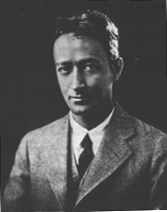 one of the
first black works to be printed by the large-scale, national publisher Harcourt,
Brace, and Company. This milestone not only encouraged other publishers to
consider Negro literature for widespread publication, but also gave support to
those who wished to see black music and art uncovered and made public for the
nation to experience (Lewis 25). Consisting of short stories, poems, and a short
novel, Jean Toomer's Cane, pub
one of the
first black works to be printed by the large-scale, national publisher Harcourt,
Brace, and Company. This milestone not only encouraged other publishers to
consider Negro literature for widespread publication, but also gave support to
those who wished to see black music and art uncovered and made public for the
nation to experience (Lewis 25). Consisting of short stories, poems, and a short
novel, Jean Toomer's Cane, pub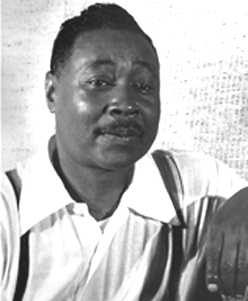 lished in 1923, compared and contrasted through
documentation the lives of southern, rural blacks with those of the urban north.
The book exposed the egregious racism that festered in both regions and
demonstrated the literary range and brilliance little believed blacks were
capable of. A year later in 1924, writer and editor Jessie Fauset wrote her
first novel, There Is Confusion, portraying the lives of middle-class
African-Americans. However, America now was made to view Negro life through the
eyes of the most vulnerable individual of the 1920's and 1930's, the black
woman. The ability and more so the genius of this fresh literature solidified
the movement as lasting and spurred further events that more overtly commenced
the Harlem Renaissance.
lished in 1923, compared and contrasted through
documentation the lives of southern, rural blacks with those of the urban north.
The book exposed the egregious racism that festered in both regions and
demonstrated the literary range and brilliance little believed blacks were
capable of. A year later in 1924, writer and editor Jessie Fauset wrote her
first novel, There Is Confusion, portraying the lives of middle-class
African-Americans. However, America now was made to view Negro life through the
eyes of the most vulnerable individual of the 1920's and 1930's, the black
woman. The ability and more so the genius of this fresh literature solidified
the movement as lasting and spurred further events that more overtly commenced
the Harlem Renaissance.
The events that helped the Harlem
Renaissance's influence spread and augment were interconnected and momentous. In
March of 1924, Charles S. Johnson, a high-ranking official in the National Urban
League, hosted a formal dinner in recognition of the new, blossoming literary
talent of the black community; the night was also an endeavor to acquaint New
York's established white literary enterprise with the rising black  writers. The
night proved successful and soon the societal-probing and criticizing magazine
The Survey Graphic released an entire issue devoted to Harlem the following
March. The black philosopher and academic Alain Leroy Locke edited the issue in
which a multitude of Negroes contributed work and the aesthetics of black
literature and art were defined.
writers. The
night proved successful and soon the societal-probing and criticizing magazine
The Survey Graphic released an entire issue devoted to Harlem the following
March. The black philosopher and academic Alain Leroy Locke edited the issue in
which a multitude of Negroes contributed work and the aesthetics of black
literature and art were defined. Carl Van Vechten's
Nigger Heaven was published
in 1926 and despite offending a number of blacks it did reveal an accurate
representation of life in Harlem; a "Negro vogue" was established
through the book's exposure of both the privileged and abject aspects of Harlem
and attracted large numbers of both the white and black erudite populations. The
buzz surrounding Harlem fueled a national market for black literature and in the
latter of 1926 Fire!!, the first solely-black produced magazine, introduced such
aspiring writers as Langston Hughes and Zora Neale Hurston. There was no single
and defined style or ideology that could represent the gamut of artistic
expression of the magazine and the era, but an acute interest in the
African-American heritage, a sense of newly discovered racial pride, and the
yearning for social and political equality were fundamental to both (Lewis 27).
The magazine helped spur the over fifty volumes of poetry and fiction published
by more than 16 black writers from the mid 1920's to the mid 1930's.
Carl Van Vechten's
Nigger Heaven was published
in 1926 and despite offending a number of blacks it did reveal an accurate
representation of life in Harlem; a "Negro vogue" was established
through the book's exposure of both the privileged and abject aspects of Harlem
and attracted large numbers of both the white and black erudite populations. The
buzz surrounding Harlem fueled a national market for black literature and in the
latter of 1926 Fire!!, the first solely-black produced magazine, introduced such
aspiring writers as Langston Hughes and Zora Neale Hurston. There was no single
and defined style or ideology that could represent the gamut of artistic
expression of the magazine and the era, but an acute interest in the
African-American heritage, a sense of newly discovered racial pride, and the
yearning for social and political equality were fundamental to both (Lewis 27).
The magazine helped spur the over fifty volumes of poetry and fiction published
by more than 16 black writers from the mid 1920's to the mid 1930's.
--------------------------------------------------------
The diversity of the literature written
during the Harlem Renaissance truly reflected the growing interest of the
subject matter and how much needed to be said about the issues that were being
examined. The jazzy poems of Langston Hughes discussing ghetto life, the
embittered sonnets of Claude McKay assailing racism, and the ambivalent poetry
of Countee Cullen questioning where the African-American truly belonged embodied
only some of the literary discourses of blacks during the Harlem Renaissance.
Books such as Quicksand by Nella Larson and Their Eyes Were Watching
God by Zora
Neale Hurston investigated such topics as the psychological effect of the loss
of identity of black women and the impact of race and gender on the individual.
The success of black literature helped open new opportunities into the
mainstream white magazines and publishing houses, though some black leaders
denounced such capitulations as reinforcing negative African-American
stereotypes. But the writers themselves refused the validity of this attacks and
asserted that they intended to express themselves without any chains, despite
society's popular beliefs. Literature was where the Harlem Renaissance had begun
and it was where it would receive its greatest praise and recognition.
sonnets of Claude McKay assailing racism, and the ambivalent poetry
of Countee Cullen questioning where the African-American truly belonged embodied
only some of the literary discourses of blacks during the Harlem Renaissance.
Books such as Quicksand by Nella Larson and Their Eyes Were Watching
God by Zora
Neale Hurston investigated such topics as the psychological effect of the loss
of identity of black women and the impact of race and gender on the individual.
The success of black literature helped open new opportunities into the
mainstream white magazines and publishing houses, though some black leaders
denounced such capitulations as reinforcing negative African-American
stereotypes. But the writers themselves refused the validity of this attacks and
asserted that they intended to express themselves without any chains, despite
society's popular beliefs. Literature was where the Harlem Renaissance had begun
and it was where it would receive its greatest praise and recognition.
Biography and Influence of Countee Cullen
Countee Leroy Porter was not a conventional Harlem Renaissance
poet; he did not use the gaudy and cultured diction that many of his fellow
colleagues infused into their work in their effort to separate themselves from
the mundane and traditional "white poetry". Rather, Porter made use of
the time-honored poetic forms of sonnets and quatrains in his discourses about
love, beauty, and death. Though his style emulated the classic poetry of John
Keats and Percy Shelley, Countee Porter expressed the Negro experience like few
others of his day.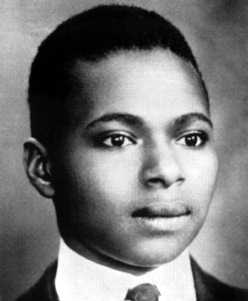
Countee Porter's surreptitious
demeanor, both in regard to his poetry and private life, has left many facts of
his childhood a matter of inquiry. His exact birth location remains a mystery;
though the date, May 30, 1903 is indubitable, cities ranging from New York City,
Baltimore, and Louisville, Kentucky have all been given as possible places of
his beginning. Sometime early in his childhood Porter's mother deserted him,
leaving the boy's adolescence in control of his grandmother. At nine, the two
moved to Harlem and lived in an apartment near Salem Methodist Episcopal, the
region's largest church. His grandmother soon died, and the church's head
pastor, Reverend Frederick Cullen and his wife, adopted the young man. Reverend
Cullen was a prestigious spiritual and societal leader, helping found the
National Urban League and heading the Harlem branch of the NAACP. He would use
his influence to get his adopted son enrolled at the highly acclaimed De Witt
Clinton High School in Manhattan, where Countee quickly stood out shining as one
of the few black students. Making no waste of the excellent opportunity, Countee
Cullen became a member of the honor society and was elected editor of the school
newspaper; an early poem entitled "I Have a Rendezvous With Life" was
published in the school's literary magazine and won a prize (Otfinoski 69). He
was accepted at New York University after graduating in 1922.
During his time at NYU, Cullen's
talent was fostered by his poetry's success. Soon, distinguished periodicals
such as Poetry, Harper's, and the American Mercury showcased Cullen's lyrical
brilliance. Following his graduation in 1925, Cullen gained further recognition
as the winner of Poetry magazine's esteemed John Reed Memorial Prize for the
poem "Threnody for a Brown Girl" (Shucard 56). Another famous
African-American poet, Langston Hughes, took second place in the same contest,
and the two became close friends thereafter. Hughes's poetry embodied the Harlem
Renaissance's vanguard writing style, filled with jazz and color; yet Cullen
felt that his friend's work d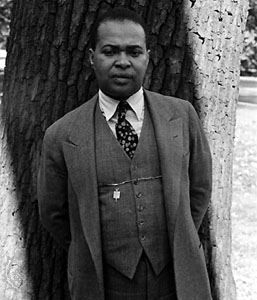 id not belong "to the dignified company, that
select and austere circle of high literary expressions which we call
poetry" (qtd. in Otfinoski 57). Cullen's increasing popularity in 1925
allowed for the publication of his first volume of poetry; Color was one of the
year's most lauded works and marked a momentous milestone for the Harlem
Renaissance; the movement now proved it went far beyond the reactionary
literature of a few embittered blacks and reflected the elegance with which
poets like Cullen employed a measured line and the skillful rhyme (Collier 73).
Now 23, Countee Cullen ranked as the most celebrated black poet in America. He
earned his masters degree in 1926, studying literature at Harvard before
publishing The Ballad of the Brown Girl and Copper Sun in 1927, the latter of
which critics assailed for containing too few racial poems; an indicative fact
of Cullen's belief that he was not a "Negro poet", but rather a poet
who happened to be black.
id not belong "to the dignified company, that
select and austere circle of high literary expressions which we call
poetry" (qtd. in Otfinoski 57). Cullen's increasing popularity in 1925
allowed for the publication of his first volume of poetry; Color was one of the
year's most lauded works and marked a momentous milestone for the Harlem
Renaissance; the movement now proved it went far beyond the reactionary
literature of a few embittered blacks and reflected the elegance with which
poets like Cullen employed a measured line and the skillful rhyme (Collier 73).
Now 23, Countee Cullen ranked as the most celebrated black poet in America. He
earned his masters degree in 1926, studying literature at Harvard before
publishing The Ballad of the Brown Girl and Copper Sun in 1927, the latter of
which critics assailed for containing too few racial poems; an indicative fact
of Cullen's belief that he was not a "Negro poet", but rather a poet
who happened to be black.
Countee's relationship with Yolande Du Bois, daughter of the famous black writer
and leader W. E. B. Du Bois, held the similar furtive theme that Cullen retained
his entire life. Their marriage, the social apex of 1928 for the Harlem
Renaissance, was not a successful one; the two divorced in less than two years.
Mirroring his private failure, Cullen's literary career began to experience
significant setbacks. His fou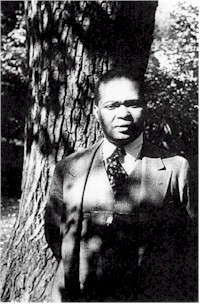 rth volume of poetry,
The Black
Christ and Other Poems, was published in 1929 and, as the title suggests, contained rich
religious imagery. Cullen's first and only novel, One Way to Heaven, took a deep
look at Harlem life. However, both these works were critically berated as inapt
and structurally flawed (Otfinoski 58). Cullen began a career in education,
teaching English and French at the all-black Frederick Douglass Junior High
School in Harlem, when the Great Depression left him without a steady income
based on his literary work. Though his writing greatly waned in the 1930's,
Cullen did translate the Greek tragedy Medea by Euripides and managed to publish
The Lost Zoo, a children's book about animals that refused boarding Noah's Ark.
He wedded Ida Mae Roberson, a close friend for ten years, a union that was
considerably better than his previous marriage. Cullen then adapted Arna
Bontemps's novel, God Sends Sunday, into the musical St. Louis Woman, which was
persecuted by black critics for creating a negative image of African-Americans.
Critical harangues worsened Cullen's high blood pressure and on January 9, 1946,
at age 42, he died of uremic poisoning.
rth volume of poetry,
The Black
Christ and Other Poems, was published in 1929 and, as the title suggests, contained rich
religious imagery. Cullen's first and only novel, One Way to Heaven, took a deep
look at Harlem life. However, both these works were critically berated as inapt
and structurally flawed (Otfinoski 58). Cullen began a career in education,
teaching English and French at the all-black Frederick Douglass Junior High
School in Harlem, when the Great Depression left him without a steady income
based on his literary work. Though his writing greatly waned in the 1930's,
Cullen did translate the Greek tragedy Medea by Euripides and managed to publish
The Lost Zoo, a children's book about animals that refused boarding Noah's Ark.
He wedded Ida Mae Roberson, a close friend for ten years, a union that was
considerably better than his previous marriage. Cullen then adapted Arna
Bontemps's novel, God Sends Sunday, into the musical St. Louis Woman, which was
persecuted by black critics for creating a negative image of African-Americans.
Critical harangues worsened Cullen's high blood pressure and on January 9, 1946,
at age 42, he died of uremic poisoning.
A year after Cullen's death, a volume
aptly entitled On These I Stand was published containing a selec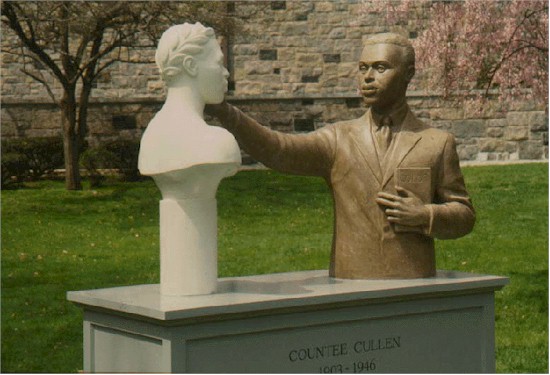 tion of poems
the author thought to be his best. Countee Cullen's best work was achieved as a
young man, and though his classical style separated him from the other writers
of the Harlem Renaissance, it was attacked as lacking the vitality and
liberating force of contemporary black culture. Criticism of Cullen points to
his uncontrollable perfectionist form, "In a personal way, using poetry as
a device to maintain control worked for him, but for that to happen, he
frequently lapsed into over-control, sacrificing the blood of poems to
structures and language" (Shucard 124). Countee Cullen represented the
other half of the brassy Jazz age, the highly intellectual influence of the
Harlem Renaissance that inculcated the minds of 1920's and 1930's America.
tion of poems
the author thought to be his best. Countee Cullen's best work was achieved as a
young man, and though his classical style separated him from the other writers
of the Harlem Renaissance, it was attacked as lacking the vitality and
liberating force of contemporary black culture. Criticism of Cullen points to
his uncontrollable perfectionist form, "In a personal way, using poetry as
a device to maintain control worked for him, but for that to happen, he
frequently lapsed into over-control, sacrificing the blood of poems to
structures and language" (Shucard 124). Countee Cullen represented the
other half of the brassy Jazz age, the highly intellectual influence of the
Harlem Renaissance that inculcated the minds of 1920's and 1930's America.
Selected works:
Click here for a chronology of Cullen's life
Click here for Cullen's thoughts on Blacks, literary tradition, and modernity
Analysis of "Any Human to Another"
The Text:
The ills I sorrow at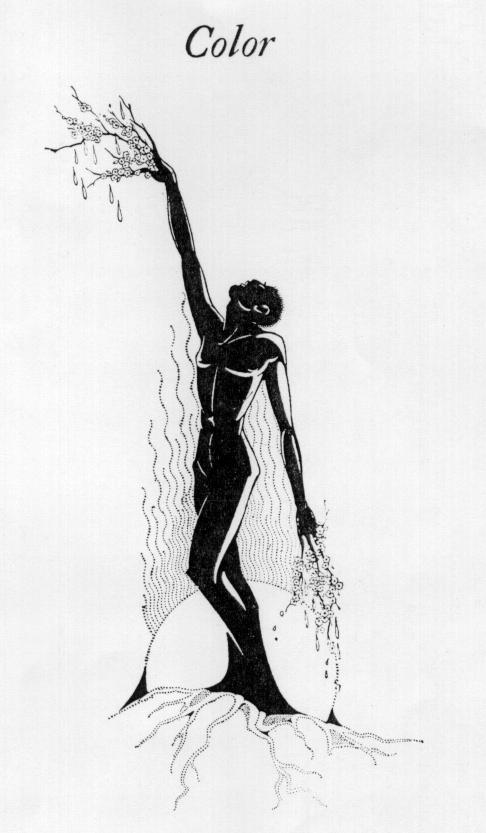
Not me alone
Like an arrow
Pierce to the marrow
Through the fat
And past the bone.
Your grief and mine
Must intertwine
Like sea and river,
Be fused and mingle,
Diverse yet single,
Forever and forever.
Let no man be so proud
And confident,
To think he is allowed
A little tent
Pitched in a meadow
Of sun and and shadow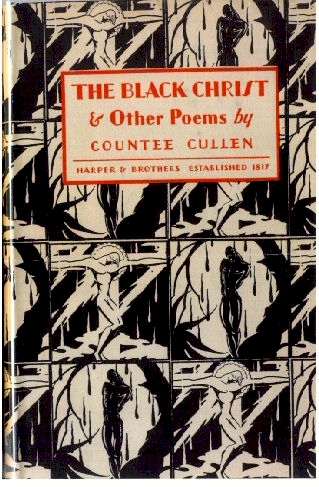
All his little own.
Joy may be shy, unique,
Friendly to a few,
Sorrow never scorned to speak
To any who
Were false or true.
Your every grief
like a blade
Shining and unsheathed
Must strike me down.
Of bitter aloes wreathed,
My sorrow must be laid
On your head like a crown.
Click here to read more of Cullen's poetry
The Analysis:
Countee Cullen's "Any Human to Another" stands distinctly apart from
many of the poetry African-Americans were writing during the Harlem Renaissance.
While it was the goal of the majority of blacks to celebrate, through
literature, their uniqueness and separation from the white culture they had been
oppressed under, Cullen's poem reaches a higher level of intellectuality by
commenting on the ubiquitous Harlem theme of pain, but through a universal
approach; he makes his point clear that what every human has to share, whether
white or black, is the sorrow he or she feels and thus can relate to through
other humans.
The poem's opening stanza runs six
lines of the same sentence and contains an unconventional rhyming scheme of
abccab. Cullen achieves his point of relating the individual's pain as part of
the overall whole, though remaining an independent being, through this broken up
sentence; each line contributes to the amalgamation of a complete sentence yet
remains distinct,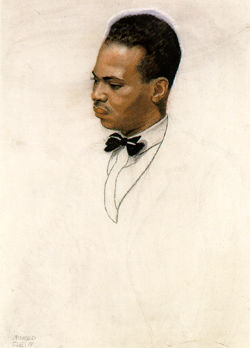 standing alone on its own line; the entire poem is written using this symbolic
syntax. The opening lines introduce unspecified
"ills" of which the speaker indicates he does not feel alone. Though
the exact troubles the speaker refers to go unnamed throughout the poem, the
severity of their impact is clearly indicated through the concluding four lines
of the first stanza. The ills are "Like an arrow" (3), they
"Pierce to the marrow, / Through the fat / And past the bone" (4-6).
This simile, comparing human grief to an arrow that egregiously harms the health
of "any human", serves to prove the authenticity of the deep-seated
pain experienced particularly by blacks during the time period (Wasley 3). Of
the stanza's twenty-two words, at least six have negative connotations, each
carefully chosen. "Ills' gives a more absolute feeling of pain since it
encapsulates both mental anguish and physical agony, repercussions of the era's
racism. The placement of "alone" is indicative of the poem's theme;
the implication of the line refutes the words connotation, "Not me
alone" (2), thus though it appears in the poem, its function is to convey
its opposite; this was the precise dichotomy Cullen wished to reveal about the
era. Though human distress is a personal emotion, it commonly results from a
connection with another human, and for blacks during the Harlem Renaissance,
grief was a shared sentiment; each feeling society's prejudice separately, but
collectively embodying the epoch's ignorance. "Pierce" denotes an
almost unnoticeable type of cut, though stinging and lasting in effect. The
glamour and attraction of 1920's America makes the pervading undercurrent of
racism at times inconspicuous, but the racially bias climate of the time period
had enduringly noxious effects on the lives of African-Americans.
standing alone on its own line; the entire poem is written using this symbolic
syntax. The opening lines introduce unspecified
"ills" of which the speaker indicates he does not feel alone. Though
the exact troubles the speaker refers to go unnamed throughout the poem, the
severity of their impact is clearly indicated through the concluding four lines
of the first stanza. The ills are "Like an arrow" (3), they
"Pierce to the marrow, / Through the fat / And past the bone" (4-6).
This simile, comparing human grief to an arrow that egregiously harms the health
of "any human", serves to prove the authenticity of the deep-seated
pain experienced particularly by blacks during the time period (Wasley 3). Of
the stanza's twenty-two words, at least six have negative connotations, each
carefully chosen. "Ills' gives a more absolute feeling of pain since it
encapsulates both mental anguish and physical agony, repercussions of the era's
racism. The placement of "alone" is indicative of the poem's theme;
the implication of the line refutes the words connotation, "Not me
alone" (2), thus though it appears in the poem, its function is to convey
its opposite; this was the precise dichotomy Cullen wished to reveal about the
era. Though human distress is a personal emotion, it commonly results from a
connection with another human, and for blacks during the Harlem Renaissance,
grief was a shared sentiment; each feeling society's prejudice separately, but
collectively embodying the epoch's ignorance. "Pierce" denotes an
almost unnoticeable type of cut, though stinging and lasting in effect. The
glamour and attraction of 1920's America makes the pervading undercurrent of
racism at times inconspicuous, but the racially bias climate of the time period
had enduringly noxious effects on the lives of African-Americans.
----------------------------------------------------------------------
The poem's theme of shared grief is
extended in the second stanza's six lines, consisting again of an unusual rhyme
scheme, but one entirely different from that of the first stanza. In fact, every
stanza has at least an altered rhyme scheme of any of the others; every human
has grief (each stanza has a rhyme scheme), every human feels it in different
ways (no rhyme scheme is d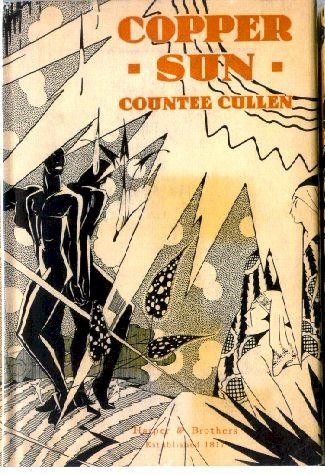 oubled),
and every human's grief contributes to the world's oceans of misery (each stanza
serves as a part of the entire poem). Lines 7-12 explicitly convey the author's
feeling about the interconnectedness of human suffering, using the fitting
comparison of grief to water bodies. The speaker directly addresses the reader
when he claims "Your grief and mine / Must intertwine / Like sea and river"
(7-9); the origins of the grief are never given and may not be the same,
therefore indicating how closely related any human's grief is to another; their
sorrows "must" come together and constitute a portion of the entire world's
troubles, just like smaller, separate bodies of water come together and
concertedly empty out into a larger body of water. Cullen's personification of
grief being "fused" and "mingling" explains how grief is shared among humans,
even though each human experiences a "diverse" and "single" sorrow. Cullen
stresses the equality, particularly of blacks and whites, by combining the most
prevalent and experienced emotion of mankind: grief. The closing line of the
second stanza again stresses the absoluteness of human suffering and the
universality that the poem's title introduces, proclaiming that grief
intertwines "Forever and forever" (12). The third and fourth stanzas give a
grave warning against the sin of pride and express the inclusiveness of sorrow.
oubled),
and every human's grief contributes to the world's oceans of misery (each stanza
serves as a part of the entire poem). Lines 7-12 explicitly convey the author's
feeling about the interconnectedness of human suffering, using the fitting
comparison of grief to water bodies. The speaker directly addresses the reader
when he claims "Your grief and mine / Must intertwine / Like sea and river"
(7-9); the origins of the grief are never given and may not be the same,
therefore indicating how closely related any human's grief is to another; their
sorrows "must" come together and constitute a portion of the entire world's
troubles, just like smaller, separate bodies of water come together and
concertedly empty out into a larger body of water. Cullen's personification of
grief being "fused" and "mingling" explains how grief is shared among humans,
even though each human experiences a "diverse" and "single" sorrow. Cullen
stresses the equality, particularly of blacks and whites, by combining the most
prevalent and experienced emotion of mankind: grief. The closing line of the
second stanza again stresses the absoluteness of human suffering and the
universality that the poem's title introduces, proclaiming that grief
intertwines "Forever and forever" (12). The third and fourth stanzas give a
grave warning against the sin of pride and express the inclusiveness of sorrow.
-----------------------------------------------------------------
An element of spirituality, which is
continued later in the poem, cautions the reader against pride, one of the seven
deadly sins of Christian doctrine. The word "confident" in line 14,
typically carrying a positive connotation, is warned against as well; Cullen
uses the word, rather, to imply the "arrogance, pomposity, and
self-importance" with which society was ruled by during the gilded 1920's,
characteristics that "go against the poem's theme of equality and universal
fellowship" (Wasley 3). 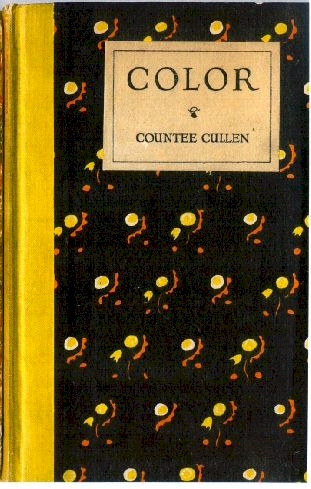 The speaker then mocks any man who thinks "he is
allowed / A little tent / Pitched in a meadow / Of sun and shadow / All his
little own" (15-19). These lines convey the foolishness of isolating the self
from the undeniable connection each human shares with the world; the repetition
of the word "little" in line 16 and 19 stresses the speaker's contempt for those
who deny themselves the experience of unity and equality, scorning how small
their worlds then become. The adjectives describing "joy" in the fourth stanza
set up the stark contrast between happiness and sorrow. While joy is "shy,
unique / Friendly to a few" (20-21), sorrow ramifies into the lives of any
human, whether they be "false or true" (24); therefore, grief, contrasting to
happiness, affects all people regardless of the morality with which they live
their lives; this truth augments the power and authenticity of grief's impact on
"any human". Again, Cullen personifies sorrow as capable of scorn and speech,
creating a much bolder image of the emotion than that of the coy and less-felt
sentiment of joy.
The speaker then mocks any man who thinks "he is
allowed / A little tent / Pitched in a meadow / Of sun and shadow / All his
little own" (15-19). These lines convey the foolishness of isolating the self
from the undeniable connection each human shares with the world; the repetition
of the word "little" in line 16 and 19 stresses the speaker's contempt for those
who deny themselves the experience of unity and equality, scorning how small
their worlds then become. The adjectives describing "joy" in the fourth stanza
set up the stark contrast between happiness and sorrow. While joy is "shy,
unique / Friendly to a few" (20-21), sorrow ramifies into the lives of any
human, whether they be "false or true" (24); therefore, grief, contrasting to
happiness, affects all people regardless of the morality with which they live
their lives; this truth augments the power and authenticity of grief's impact on
"any human". Again, Cullen personifies sorrow as capable of scorn and speech,
creating a much bolder image of the emotion than that of the coy and less-felt
sentiment of joy.
-----------------------------------------------------------------
The concluding stanza both continues
previous motifs of the work and also introduces new ideas that enhance the theme
and effectiveness of the poem. The speaker again addresses the reader directly
when he states that "Your every grief / like a blade / Shining and
unsheathed / Must strike me down" (25-82). Here, the word "must"
is used again, this time to signify that the speaker needs to feel the brunt of
the reader's sorrow because human suffering becomes dignified when it is
collective; though the blade will strike the speaker down, Cullen feels that
"shared grief is given a noble quality" (Wasley 4), symbolized by his
description of it as "shining and "unsheathed" (27), like a knight's sword.
Cullen, by making the line the only one not capitalized in the poem, symbolizes
the importance of the comparison of grief to a blade, both serving complex
functions of inflicting pain, yet containing a noble quality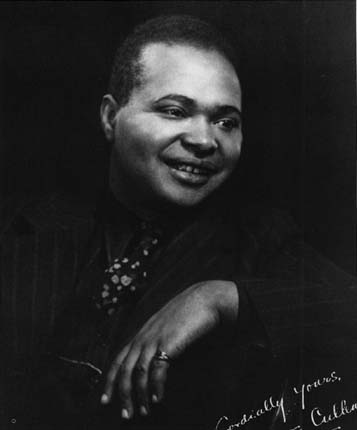 . The speaker, after accepting the reader's sorrow, demands the reader accept his
own sorrows; this mutual acceptance may be difficult, but it will allow each
person's grief to be healed, it will be a "bitter aloe" (29). The last
two lines of the poem reintroduce the religious motif of the poem; the speaker
declares that his own sorrow "must be laid / On your head like a
crown" (30-31). This religious allusion, comparing the reader to Jesus
Christ, symbolizes how important absorbing human sorrow is to spiritual growth.
In Christian belief, Christ suffered the most painful death to atone for the
sins of all humans; the crown of thorns placed on His head before his
crucifixion symbolized the king-like quality of his nature, though it resulted
in even further pain. Cullen, then, proudly proclaims that each man may serve to
be another's Christ if he or she is willing to endure the sorrow of gaining such
knowledge.
. The speaker, after accepting the reader's sorrow, demands the reader accept his
own sorrows; this mutual acceptance may be difficult, but it will allow each
person's grief to be healed, it will be a "bitter aloe" (29). The last
two lines of the poem reintroduce the religious motif of the poem; the speaker
declares that his own sorrow "must be laid / On your head like a
crown" (30-31). This religious allusion, comparing the reader to Jesus
Christ, symbolizes how important absorbing human sorrow is to spiritual growth.
In Christian belief, Christ suffered the most painful death to atone for the
sins of all humans; the crown of thorns placed on His head before his
crucifixion symbolized the king-like quality of his nature, though it resulted
in even further pain. Cullen, then, proudly proclaims that each man may serve to
be another's Christ if he or she is willing to endure the sorrow of gaining such
knowledge.
Though not representing a typical
Harlem Renaissance poem, Countee Cullen's "Any Human to Another"
establishes a greater level of unanimity and responsibility among every
individual. It addresses the racially tense climate of the era, but allows any
human, white or black, to understand and relate to its universal message of
equality.
Collier, Eugenia W. "I Do
Not Marvel, Countee Cullen." Modern Black Poets: A Collection of
Critical essays. Ed. Donald B. Gibson. Englewood Cliffs, NJ: Prentice Hall, Inc.
1973. 69-83.
Countee Cullen (1903-1946). Ed. Walter C. Daniel. 18 January 2003.
http://www.georgetown.edu/faculty/bassr/heath/syllabuild/iguide/cullen.html
Lewis, David Levering. When Harlem Was in Vogue. New York: Vintage Books, 1982.
Otfinoski, Steven. American Profiles: Great Black Writers. New York: Facts on
File, Inc., 1994.
Shucard, Alan R. Countee Cullen. Boston: Twayne, 1984.
"The Harlem Renaissance". 18 January 2003. http://www.unc.edu/courses/eng81br1/harlem.html
Wasley, Aidan. "Any Human to Another". Poetry For Students: Presenting Analysis,
Context,
and Criticism on Commonly Studied Poetry. Ed. Marie Rose Napierkowski. Detriot,
MI:Gale
Research. 1998. 2-5.